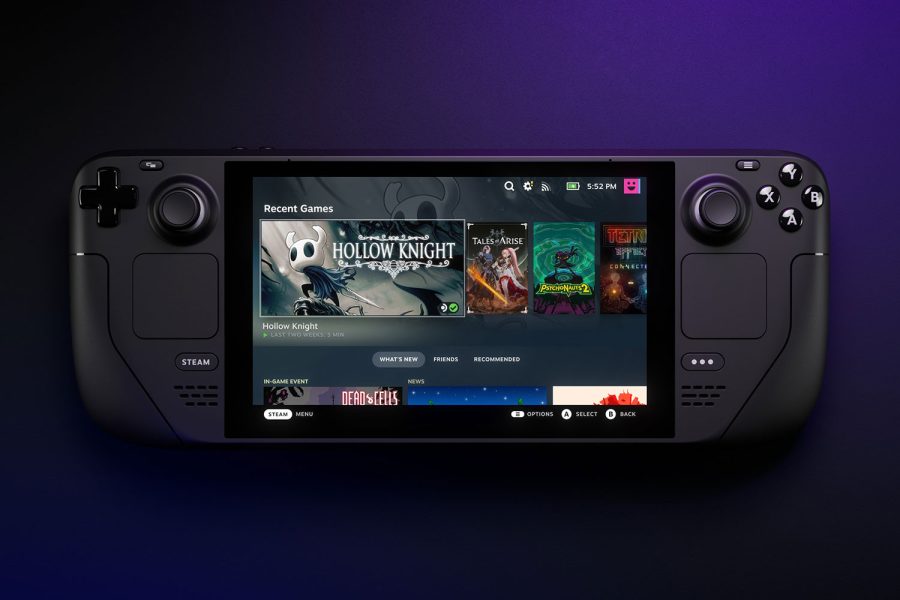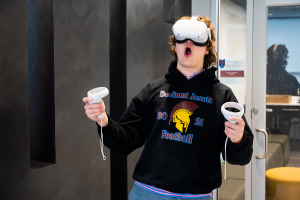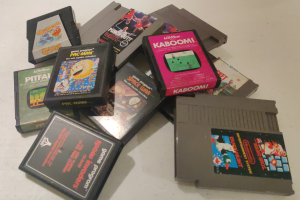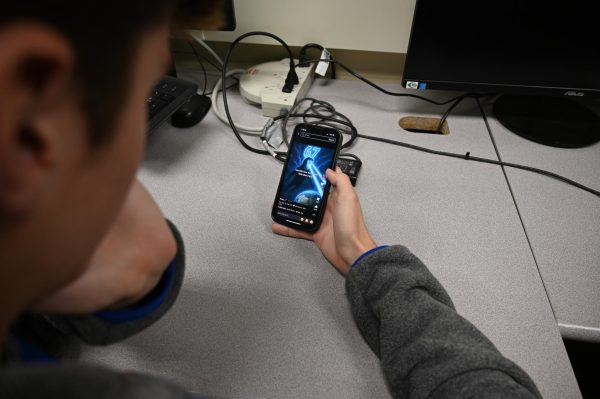The biggest thing to happen to computers in decades is smaller than your keyboard
A full, fat computer as portable as the Nintendo Switch, and more powerful than devices twice its price. Released on March 3, The Steam Deck is widely regarded as one of the biggest things in the history of gaming, and possibly the history of computing as a whole. But what makes the device such a wonder?
I don’t think very many people care about the specifics of the device’s hardware, but rest assured that the massive accomplishments of Valve and AMD in creating the brains of the device has made for something so good that it seems impossible for a computer of this size and weight.
The device is so good that people who have spent thousands and thousands of dollars on high end computers, ultra-HD high refresh rate monitors, and headsets are ditching their luxurious and expensive technological works of art to play their games at a lower framerate, lower resolution, and with far cheaper hardware. Despite the arguably worse experience, people are playing more games with that device than on their computers, both in terms of hours per day and different games played. I have never been so excited to pay more money to play the same games I already own at a lower frame rate and resolution on a smaller screen.
The one big complaint they have is not the power of the device, but the length of the battery life. With a 40 Watt-hour battery, which is great for a device its size, is not very large. Estimated times range from an hour or so to eight, depending on the game you’re playing, and what settings it’s running at. People usually play their games at 30 frames a second, half of the 60 most games display, to save battery life. Valve has included in the operating system a compositor, a program that manages visual effects, with the ability to globally limit the framerate to 30, and to produce the frames so smoothly that it seems almost as fluid as 60, something that is rarely achieved even with frame limits within games’ own engines. If you can’t get a good enough battery life out of the device even after all that, you can always bring a power bank.
I took a quick look at how the compositor works, and it’s genius. No one would know what I’d be talking about if I were to start describing it, but it is definitely genius.
Speaking of the Steam Deck operating system, the device uses a Linux distribution called “SteamOS.” Linux is the core of a set of operating systems that all function similarly to each other. These operating systems are called Linux Distributions, or “distros” for short.
Valve made the first version of SteamOS a few years ago when they were making their Steam Machines, but it was not good. They rebuilt SteamOS from the ground up as a wholly new operating system designed specifically for the Deck.
Modern SteamOS is based on a distribution called Arch, and uses a user interface called KDE Plasma, which is highly customizable and very similar in form and function to Windows, with one main taskbar and a start menu. If you’ve used a computer, you’ll figure out KDE.
You won’t even notice the device runs Linux if you just want to use it as a console. The Steam Deck starts in Gaming Mode, in which purchasing, downloading, managing, configuring, and playing games is all done in a controller-friendly interface for the Steam client. You never need to switch to the Desktop Mode in which KDE is used, except to download some non-Steam games and software. Even still, Valve is working on making more and more applications easily installed through Gaming Mode, so that might not be true for very long.
Not all games support Linux, mostly due to the fact that less than 2% of people use it according to the Steam Hardware Survey on March 8. This is where Proton steps in. Proton is a translator from Windows to Linux, and it works surprisingly well. Having been a Linux user for over three years, I have had lots of first-hand experience using Proton and watching it improve over time, and trust me, when Proton works, which is almost every time, it really works.
What about your games that aren’t on Steam? Well, you can get games on Epic or GoG through a program called the “Heroic Games Launcher.” you can also download emulators for nearly all consoles from the Atari 2600 to the Nintendo Switch through Flatpak (the “app store” of SteamOS), and you can still download standalone Windows programs and run them through WINE (recursive acronym for “Wine Is Not an Emulator), the windows to Linux translator Proton is based on.
Welcome to Q2! We’ve just sent out the first set of order emails to Q2 reservers (in order of reservation time). Starting today we’re ramping up Steam Deck shipments, and will be sending more order availability emails every week. Sometimes even twice a week! pic.twitter.com/54TAoCQXfd
— Steam Deck (@OnDeck) April 4, 2022
The only real caveat is the difficulty of playing online multiplayer games like PUBG, Destiny 2, and Fortnite that use anti-cheat software incompatible with Proton. However, work is being done to allow some, if not nearly all of these games to function on the Deck through the translator.
Why not just install Windows? That’s what most people are used to, and the device is capable of running it, so what’s the problem? Well, by installing Windows you not only are using a worse OS, but you also lose the compositor, you lose official support for any problems you run into, you lose a ton of battery life, quite a bit of storage space, a whole bunch of useful settings, and you take a performance hit on top of it, all so that you can play three more games that don’t work on Linux that well, mostly the few incompatible online-only games that you wouldn’t be playing on a controller anyways.
In addition to being able to run most games on Steam nearly flawlessly, the Steam Deck should be able to play nearly every single game Nintendo ever published sooner or later. The device is powerful enough to emulate even the Nintendo Switch through an emulator called Yuzu. I have had personal experience playing Switch games with that emulator, and it’s not bad. It’s certainly in its infancy, game compatibility is a bit hit-or-miss, and it’s not super optimized yet, but the future is bright for this emulator, and the Steam Deck should be the perfect home for it. Nintendo is so pants-soilingly scared of this device that they are taking down youtube videos that show emulation on it. If that doesn’t excite you, I don’t know what will.
This tiny computer should be able to run almost every game ever made, and run them well for a starting price of only $400. That’s right, This thing, even at its highest $650 model, costs less than the laptops we bought from the school, and it’s THIS good. The only downside is that if you order one today, it won’t ship for months. Valve received loads of pre-orders for this device when they announced it in mid-July of 2021, far more than they expected, and though they are rapidly ramping up production, there’s a long line to wait in for your own Deck. I reserved mine about four days after pre-orders went live, and I’m not going to receive mine for at least six more months. After one year of the pre-order line, hopefully it will have been worth the wait.














